by Hilary Vick
8 minute read
For the past 11 years I have been trying to get more London parents to try reusable nappies. This may be one of the biggest behavioural change challenges there is. Disposables nappies are cheap, convenient and easy to dispose of. You can throw a nappy in a park bin, pop it in the nappy bin at the swimming pool, leave a day’s worth at your baby’s nursery. Reusables are more difficult, right? You have to carry stinky ones home with you and then you have to wash and dry them. So how do you persuade people to use the more difficult, unfamiliar option?
Perhaps single-use nappies are too easy. The most effective way to reduce nappy waste might be to make using “disposable” nappies more difficult. As it has become more and more stressful and expensive to drive and park a car a car in London, public transport has become the norm, even if it is less convenient.
But nothing similar has been tried with nappies, and there seems to be little interest in either restricting their disposal or passing on the cost to parents. The policy tool of choice has been incentive and reward schemes – but these are by no means easy to design. So what’s the evidence that they can be an effective use of public funds?
Capitol idea
My initial experience of nappy incentives was when I set up a business, Nappy Ever After. Local nappy laundry rewards were already being used elsewhere in the UK to encourage parents to try washable nappies, and the North London Waste Authority and LB Camden decided to pilot an incentive scheme via my company. They funded a £35 cashback offer, taken off the first month’s payment, to encourage people to try out a nappy laundry service.
The timing was excellent. When the scheme was launched in September 2003, the Women’s Environmental Network (WEN) and the Real Nappy Association (RNA) had recently announced that, in their view, washable nappies were the most environmentally friendly nappy and laundry services had even lower environmental impacts. The government had just brought out a green paper on waste, which recommended supporting nappy washing businesses. So did the London Mayor’s draft waste plan for London. The government allocated £2m to the Waste and Resources Action Programme (WRAP) to stimulate the real nappy market.
The pilots took off, and before long Camden parents who washed nappies at home successfully demanded that the cashback scheme was extended to them. Soon the other six boroughs of the NLWA joined in, bringing in Barnet, Enfield, Hackney, Haringey, Islington and Waltham Forest.
Diaper communication
One of the major factors in the success of the nappy cashback scheme was the accessibility of the market targeted – expectant parents and mothers. They all have contact with influencers such as midwives and health visitors and are open to receiving advice. In order to claim your cashback you had to submit both a proof of purchase and proof (a form signed by a health professional) that you were using them. Unfortunately, this made claiming the money a bit of a hassle – and some people never got around to it, making impacts harder to measure. On the positive side, it was a great way of making health service staff aware of real nappies, the cashback, and parents’ enthusiasm for both.
Perhaps more importantly, as parents enter this new phase of their lives, they tend to meet up with other people in the same boat. The cashback generated great word of mouth. Mothers don’t want to preach about real nappies to their friends but telling them they could get money back – that’s different, right? That’s not preaching, that’s spreading information about a perk.
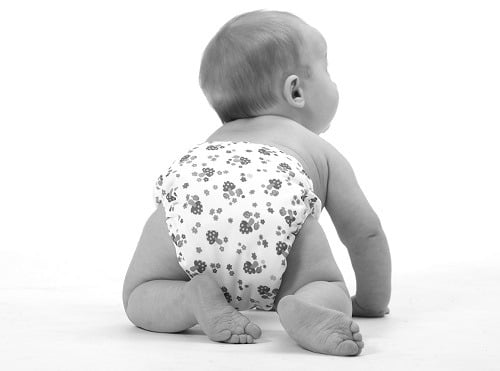
How to rear a child’s rear: incentives can make reusable nappies cheaper and easier for parents. Photo source: Hilary Vick.
The cashback scheme was an immediate success in North London, but in other counties such as Norfolk and Suffolk, similar schemes were dropped because uptake was too low to justify the costs. Outside of the parts of southern England where a proactive nappy laundry service was operating, the uptake tended to be less than one per cent of births.
Nappy Ever After worked hard at marketing, whether on the streets through branded bikes and an electric van, or via volunteers attending drop-ins.
However, demographics may well have been a bigger contributor – in London people tend to live in small flats, and parents tend to get out and about and socialise a lot. Also, the big American and Australasian population culturally has a greater expectation of real nappy use.
The cashback scheme was a reward for buying real nappies: you got money back if you bought and used them. In 2007 a new voucher scheme, Real Nappies for London was launched by WEN. Waste and recycling officers from 26 London boroughs were involved in the design of this pan-London scheme. The voucher was effectively cash to help with the upfront cost of buying nappies – a proper incentive scheme.
A wash out
However this coincided with the publicity surrounding the Environment Agency’s infamous Nappy Life Cycle Analysis published in 2005. This stated that omitting the factor of land use, washable nappies were just as bad for the environment as disposables.
Whilst those parents who were strongly committed to real nappies were unlikely to be influenced, ‘swing’ real nappy users were a different matter. Some may have been only too happy to be told that there was no environmental benefit to washing nappies, and to the Absorbent Hygiene Product Manufacturers Association (AHPMA) line that “Parents should feel no guilt, they should just choose the product that best suits their lifestyle.” As with breastfeeding and healthy eating, real nappies must compete with sophisticated nudges from marketing by wealthy multi-nationals pushing consumers towards their products.
Of course, the 2005 report was deeply flawed, and an update in 2008 said that reusables could have up to 40% lower carbon impacts (even leaving aside the issue of waste). Unfortunately there was no industry body to put the case for reusables… The revisions received little media coverage and the myth remains that washable nappies don’t benefit the environment.
A nappy balance
So what has the impact of the incentive and reward schemes been? This is difficult to say. We can measure uptake of voucher easily enough, but not everyone who uses the voucher will use the nappies. Some may still use “disposables” at nights or during the winter months when drying nappies is a challenge. Real Nappies for London (RNfL) estimates that each voucher will result in a 50% reduction in the mass of disposable nappies a household produces: in some cases there will be zero diversion, in others 100%, and in most cases somewhere in between.
RNfL also runs a continuous survey about the extent of ongoing use, but respondents are self-selecting; those who give up are less likely to bother to fill in a questionnaire. At the same time, the voucher scheme doesn’t represent the full extent of the real nappy uptake it helps to promote. There are many pre-loved nappies in circulation, provided by friends, relatives, freecycle or eBay, whose users have no motivation to apply for a voucher.
The average local authority spends £100 per baby on collecting and disposing of nappy waste. London now has a huge diversity of real nappy schemes; some boroughs offer incentives, others rewards, free trial packs, subsidised trial packs, information about real nappies – or nothing at all. Most don’t even have anywhere to see reusables before you buy. Spending a little money on nudging parents to reduce nappy waste by 10% could save a good deal of money, but authorities are reluctant to invest without clear evidence about what works. It’s perfectly set up for a piece of research to investigate the varying impacts of these schemes on the average volume of disposable nappy waste per baby.
Authorities could also benefit from advice on how to structure schemes, taking on board the views and interests of those working in the washable nappy sector and taking care not to unduly distort the market.
While progress on reducing nappy waste seems painfully slow it’s important to remind ourselves that the disposable nappy industry grew its market through constant innovation and competition over several decades. The reusable nappy industry has fought back with products in cutting edge fabrics that increase ease of use and meet the high expectations of today’s new parents but these products are unknown to the vast percentage of expectant parents.
Spending on incentives and rewards was made possible by the Waste Minimisation Act of 1998. They are still the only tool available to local authorities to reduce nappy waste; they are also a fraction of the cost of nappy waste disposal. It’s really not hard to justify a small spend on a smart scheme to help create an environment locally in which washable nappy use can grow to eventually become the norm.
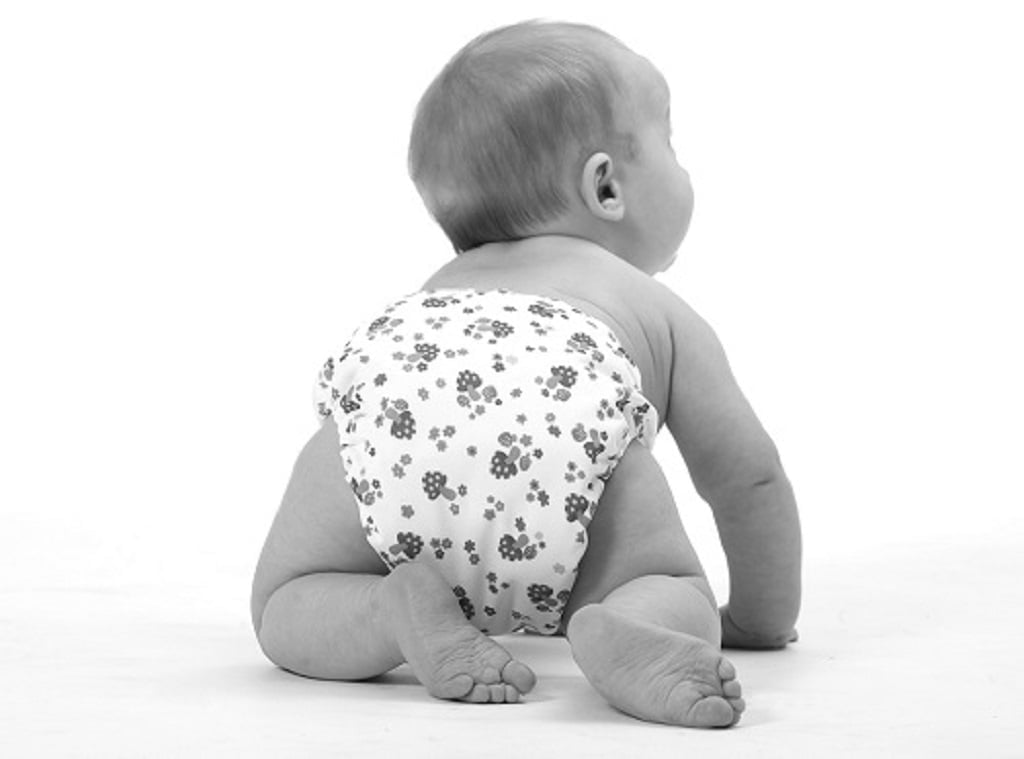

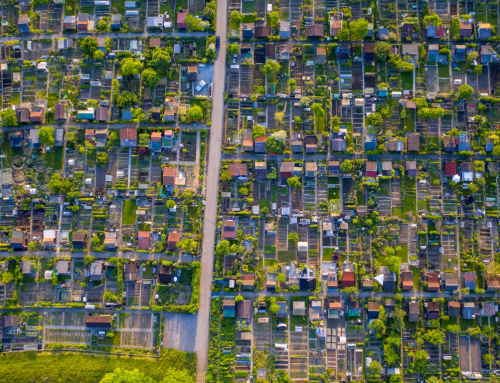
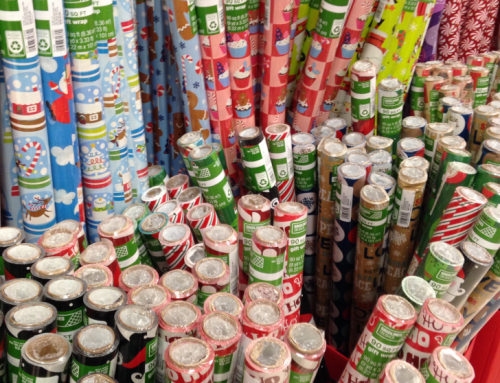

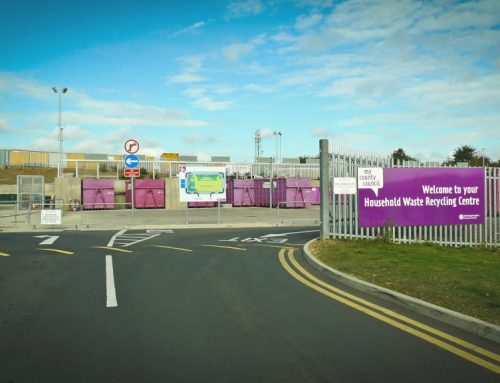

Hi Hilary,
I have been running various programs in New Zealand for quite some time and I used to import and sell nappies here in NZ. Having trialed most of what you talked about above, I have found a way that reall works over here and I am successfully employed full time now through my program I have developed here. The main thing is that I dont sell anything which makes what I offer unique and my program is not just about nappies which ticks more waste minimisation boxes. I am have all sorts going on but one of the most recent is transitioning Daycares in to cloth nappies full time in their centre’s as part of my extended program.
It is possible and do-able and it does take time but I am hoping at some stage I will be able to come and share the success of my program with the UK nappy industry and other parts of the world.
my website is http://www.thenappylady.co.nz
I hope one day we get to meet, I am sure we would have a very interesting conversation ;o)
Cheers
Kate
Kate, It’s great to hear from you. I’ve looked at your website and love the services you are offering. Actually some of it is quite similar to new products and services we’re in the process of developing at RNfL. You’re way ahead of us. It would be great if you could come over and share your knowledge and experience. I see that mums can effectively get $90 worth of reusable nappies for $25 when they attend your workshops. Can you tell me how that is funded? Do you have data on the number of people who continue to use the nappies?
Hi Hilary,
I enjoyed this article, and am glad it has produced so much discussion.
One point I picked up on is that, valuable though incentive schemes can be, their impact seems to be somewhat marginal. At the start of your article, you contrast London’s approach to nappies with its approach to traffic. Do you think that there are ways that could be more effective still in promoting real nappy use – whether that might be limits on residual waste collection, pay as you throw for residual waste, or an producer responsibility scheme for disposable nappies?
I also wondered if you would feel happier about disposable nappies if they were compostable or more widely recyclable?
The nappy libraries are very successful. Last year (may 2013-may 2014) our library loaned out 112 kits and of them only 2 people did not start using cloth (initially it was 3 people but one has since come back again and now uses cloth part time). Today I crashed a sling meet at a breastfeeding support group with my nappies, had three people book to come and get kits next week, and gave out my phone number to 5 or 6 others who were interested. that just wouldn’t happen with an incentive scheme. We are so busy that we are having to expand across the whole county now and are desperately trying to fund more kits. We were on Free Radio yesterday and have a county-wide press photoshoot with an environmental minister and the county council waste manager next Wednesday so we’re only going to get busier. If other libraries had the time to dedicate like I do, they’d be just as successful. Borrowing trial kits with no pressure is absolutely the way forward imo.
Penny, you are amazing! I agree that investment in nappy libraries is necessary to enable them to survive and flourish. But there are people who wouldn’t use a nappy library so we need investment in both incentives and libraries not one or the other. One of the problems with the RNfL voucher is the effort required to apply for them. I can say from experience that it can act as a barrier to purchasing real nappies. What I’d like to see is low value real nappy vouchers issued with the prescription exemption card. What do you think of that idea?
Interestingly, that is one of the ideas I’ve been discussing with a major British retailer over the last year. The Napnap voucher scheme has just been taken over by a lady involved in the libraries too and we are also working on a way to use those to encourage more uptake. If this particular retailer could be convinced to participate in my idea, it would make a huge difference to uptake. Unfortunately I had a set back when the person I was dealing with was moved to a different position in the company so I had to start again, but I have confidence that something can be achieved.
Big questions Peter! Outside the reusable nappy sector people don’t realise there’s a huge buzz about washable nappies at the moment. People are getting the waste message. They don’t want to leave out a huge bag of disposable nappy waste. Reusable nappies are getting better and cheaper. Nappy libraries are popping up all over the UK. People are far more willing to use pre-loved nappies. Families don’t want to waste money on disposables. There’s never been a better time to promote real nappy use. Engaging parents in peer recommendation of incentive schemes is a cheap and low risk investment.
While other conditions remain so favourable to the disposable nappy industry reusable nappies are probably only going to be used on a maximum of 10% of babies. But reducing the cost of nappy waste disposal by 10% legitimates the expenditure.
More ambitious change: limits on residual waste, pay as you throw and producer responsibility are likely to be rejected on the grounds that the cost will be born by new parents. They’re not going to happen because they would be unpopular. They would also be unfair because it would hurt the poorest.
Re recycling nappy waste: we’ve recently seen approximately £20m spent on the Knowaste nappy recycling plant, with nappy waste transported by road from as far as Scotland to West Bromwich. That has now been closed. By contrast money invested in increasing uptake of reusables is an investment that keeps on giving!
Re composting nappy waste: A ban on SAPs from single-use nappies may come eventually making the collection and local composting of nappy waste viable, but I wouldn’t rely on that.
I am one of the ‘unlucky’ ones as I live in Norfolk and when I had my first baby in 2012 the incentive scheme has already closed down. However, my sister-in-law who had benefitted from an incentive scheme a few years before passed me her (sadly) unused nappies. From then on I decided that I was going to be a cloth bum mum. I now have a second child and I am really reaping the rewards of that decision. I won’t lie and say we have never used disposables, we have, but we have also saved hundred’s of nappies going into landfill. I can’t see how any report can actually disregard this very important difference between disposable and re-usable nappies. Mine will hopefully be passed on to another family when my two are out of cloth.
I felt so strongly about promoting the use of reusable nappies that I have just set up a new cloth nappy business, and a library which covers not just my local area but the entire UK (via postal loans). I did approach Norfolk County Council about the library and business, but sadly they were not interested.
Of course the other area where savings can be made, not just on the pocket but in landfill is the use of Cloth Sanitary Protection (CSP), I came to this particular party very late, but if we could educate woman of all ages about the benefits of using CSP (and the fact that such a product exists), along with a similar incentive scheme, the amount of waste going to landfill would be reduced even further.
Thanks for mentioning CSP. What most people don’t realise is that the benefit of being more comfortable and the reliability of CSP makes the washing worthwhile. Plus of course there’s the Mooncup. Vested interests and inertia mean it’s very difficult for these products to get exposure.
Great article. I found real nappies through parents recommending them, and actually got started because of a nappy trial scheme run by Plush Pants, at the time it was about the only way to trial real nappies by post as the concept of a local nappy library was very much in it’s infancy. I got so passionate about them I ended up running the business – and from running the trial scheme I got to see that over the years (10 years I’ve been running it now) around 80% of parents who actually try real nappies go on to convert to using them either full time or part time.
Every real nappy used could save 300 disposables from going into landfill, so parents shouldn’t feel it has to be an “all or nothing” approach. I think that does worry some people. Our council also dropped their voucher incentive scheme some years ago due to lack of uptake, they found the uptake was low (I was a qualifying parent myself and only claimed half of the voucher as it was such a hassle to do), however I’ve been able to work with them in recent years and helped them set up a nappy trial scheme which runs free throughout Oxfordshire, with kits being held by volunteers around the county. The scheme seems to attract in quite a few parents who would otherwise not even consider using washable nappies, but the fact they can try it for free means if nothing else, they don’t have to buy many nappies for the 2 week trial period! It also shows them how much waste and money they can save in a way that they wouldn’t otherwise appreciate. The conversion rate is around 75% on the kits I’ve loaned out, so still very good, and this seems to justify the cost of keeping the kits maintained and current.
Great to hear all these initiatives! Just wondering, does anyone have some data on the uptake and diversion from landfill of real (modern cloth) nappies from the UK experiences?
Zero Waste SA has just supported a pilot here in Adelaide, South Australia, which offered families an opportunity to ‘try before you buy’ along with a series of demonstration sessions. We’re yet to turn the report into a web friendly case study, but there is info on the program here:
http://ecobumsclothnappies.com/nappy-library/eco-bums-hire-pack/
Of the 318 families who took up the opportunity to hire a kit at a subsidised rate, 148 responded to a survey. Based on the 73% of that 148 who had continued to use the cloth nappies, their reported usage (594 cloth nappies a day in total for that group) and the assumed weight of a disposable (300g), extrapolated over a year, we’ve reckoned that this has displaced 65 tonnes of disposables from landfill.
It costs approx $1000 up front for cloth nappies (unless they are handed down or on) and $3,500 per annum for disposables or over $10,000 from birth until toilet training. So I agree that overcoming that upfront cost, as well as encouraging people to try a new behaviour, are perhaps the biggest barriers.
Most Australians still have access to decent outdoor space (and weather!) for drying, which – given the current state of electricity prices – is a big factor in helping the real/cloth nappies compete $-wise as well as environmentally.
>The average local authority spends £100 per baby on collecting and disposing of nappy waste.
I think the next thing to do here is to determine the $ savings from these programs to local government.
Thanks Sharon, great to see and hear about your scheme in Australia. Re data; at Real Nappies for London (RNfL) we know the percentage of people we actively engage with info about the RNfL voucher per live birth in the boroughs in which we operate. We also know how many people use vouchers to buy nappies. We estimate waste diverted from landfill/incineration and the cost savings. We also have baseline data of the volume of nappy waste in the household wastestream. The data we want, but still don’t have is the actual reduction of nappy waste and thus reduction in cost after an incentive scheme has been in place for several years (showing that the uptake of real nappies is maintained longterm.) For the time being we are working on the behavioural change with a very low cost scheme so we have data that can be measured further down the line.
Great article. I was a recycling officer when the incentive schemes were getting off the ground and the local nappy library supplied all the recycling officers in the county with a bucket full of samples of nappies, liners and leaflets. I used these every time I did roadshows or any public event and the reaction was often shock that they were so different from their expectation.
Many had been told by their Mothers and Grandmothers what a trial washing nappies was and this seemed to have stuck in their minds even though they all now had washing machines.
There were some fantastic schemes around at the time including the award winning one on the Isle of Man. Is this still going? There was another in the East Midlands somewhere that sold white sacks for disposable nappies to be separated into, the revenue from which was used to subsidise nappy purchase and laundering.
Unfortunately, many re-useable are made by small companies and they don’t have the clout of the big boys who tout their disposables using the full might of their marketing budgets.
I sincerely hope that more can be done to promote the use of re-useable but in this time of austerity and funding cuts it will take the type of study that you envisage to justify the spend and even then there may still be resistance as measuring success if very difficult.
Yes, Isle of Man still has an excellent library. Most of the 177 libraries are funded from volunteers pockets and donations toward costs but now we have the Network working with Go Real and the RNA, more and more councils are getting back on.board with us. In two years time I think it’ll be a different story and things will have progressed significantly. Watch this space!
Thanks Helen. It’s true, back then councils invested a lot of time, money and effort in real nappy campaigns but we know more now! As Penny says, raising awareness of zero waste nappies has moved on, as has the reusable nappy industry and best of all, its products. There’s a lot more collaboration and pooling of resources, especially knowledge eg Go Real and Real Nappies for London. Councils can do much more for less by outsourcing; not to huge profit-making waste corporations but not-for-profits, local SMEs and local residents running nappy libraries.
Few people want to be told which nappies to use by their council – however a local mum who’s running a nappy library or real nappy SME is different – it’s a savvy investment and creates genuine and important community empowerment and cohesion. If that mum (or dad eg Ian Rapley who started Number One for Nappies c15 years ago) converts 10 mums to real nappies that’s a reduction in the cost of collection & disposal of nappy waste of £1k and if those 10 mums convert another 10 mums …. it’s a savvy spend. The data would be nice but it’s not too much of a leap of faith and it will create valuable data: a pool of waste-conscious new parents who can help councils penetrate their communities with other waste prevention initiatives.
Great article. I think a lo of the ‘problem’ with washable nappies is that folk don’t want to acknowledge the fact they have to handle poo….. it’s a reality that a single use nappy just isn’t going to contain where there is no elastic at the waist and only a puny barrier at the leg. So by their very nature disposable users will get to handle a lot of poo – not just on baby’s bottom but also on baby’s clothing , up the back to the hairline or all over the parent and their clothing too.
Likewise, they’re told by non-cloth using parents that it’s difficult and hard work (really? Bung in machine and press button??!!) Once a parent has actually tried a cloth nappy that’s a different matter, they can see and appreciate how effective they are and how easy it is.
It is a shame where local authorities cancel their incentive scheme because ‘not enough people use it and those that do would have used cloth nappies anyway.’ In reality a little more effort in promoting it in their annual magazine delivered to every door, and ensuring the topic remains easily found on their website and I’m sure they’d find a greater uptake: people love getting a reward, a cashback or something for free, and if that motivates them to actually trying cloth nappies I’m sure that we’d increase the uptake significantly if EVERY local authority offered something
One thing people don’t think about, is that even in disposables, the poo is still supposed to be disposed of in the toilet and not the trash. Granted, this is never done, but it is supposed to be! So, in theory, if the disposables were used the way they are supposed to be, the poo is handled way more than in cloth!
Thanks Miranda and Sam – another message relates to fast and slow thinking. We are quick to imagine the worst possible nappy change scenario when actually, after the first few months, especially if baby is breastfed, most nappies are merely damp, right?
That’s why we started the UK Cloth Nappy Library Network of non-profit (sometimes free) nappy libraries run by volunteers. There are 177 libraries or trial schemes now and more are added every month. Parents can borrow everything they need to try washable nappies. This helps them find out which they like best and check which fit nicely before they buy any.
The problem with the cashback schemes was that people bought nappies that they then didn’t get on with, and they had very little support so often just stopped using them and told others that cloth was useless and leaked, when actually they just needed a different nappy or help with the fit. The libraries provide help and support to all nappy users, can provide longterm loans to parents in financial difficulties and have helped hundreds of parents convert to, and continue using cloth nappies already. One library alone supported over 100 people last year, with only two choosing not to use cloth after the trial.
Because the libraries cost the volunteers quite a lot to run, and even those who charge for hire still pay most costs out of volunteers pockets, there are a few gaps still, but we are working with the RNA and Go Real to produce reports each year for local councils, helping councils get involved with the libraries, and saving them a lot of money. Hopefully their faith in cloth can be restored by the dedication of the volunteers meaning that libraries start to get more support and can help even more people.
Anyone who wants to know more can contact me, or Google “UK Cloth Nappy Libraries” to find the map then click each pin for library contact details and info.
Thanks Penny for sharing info about UK nappy libraries. They are an effective, low cost way of growing real nappy awareness.
A great read! I wasn’t aware the RNA had been around for so long, I thought they where fairly new!
Hi Anna, Glad you enjoyed the article. I’m afraid you’ve spotted an editorial howler – wrong RNA. We’ve now corrected the link to relate to the Real Nappy Association rather than the Reusable Nappy Association.
That makes more sense!
Excellent article Hillary. I think any scheme that can reduce the impact and environmental footprint of human activity has to be applauded. As you point out, it would be excellent to see statistical figures of exactly how the use of traditional nappy vs disposable nappy stacks up in environmental terms but, the gut feeling is that it has to be in favour of the former. It would be great just to be able to visit municipal waste collection points (as we all have to do at some stage in our lives) and not see discarded, squashed plastic nappies lying on the road!
Thanks Chris. In Sweden studies have shown it’s really difficult to determine decisively which nappy system has lower environmental impacts overall. However, the thing that is clear is that single-use nappies produce more waste and also; the longer a child stays in nappies the greater the environmental impacts. So raising awareness of introducing your child to the potty/toilet is important and this can be an additional benefit of engaging with parents about reusable nappies.